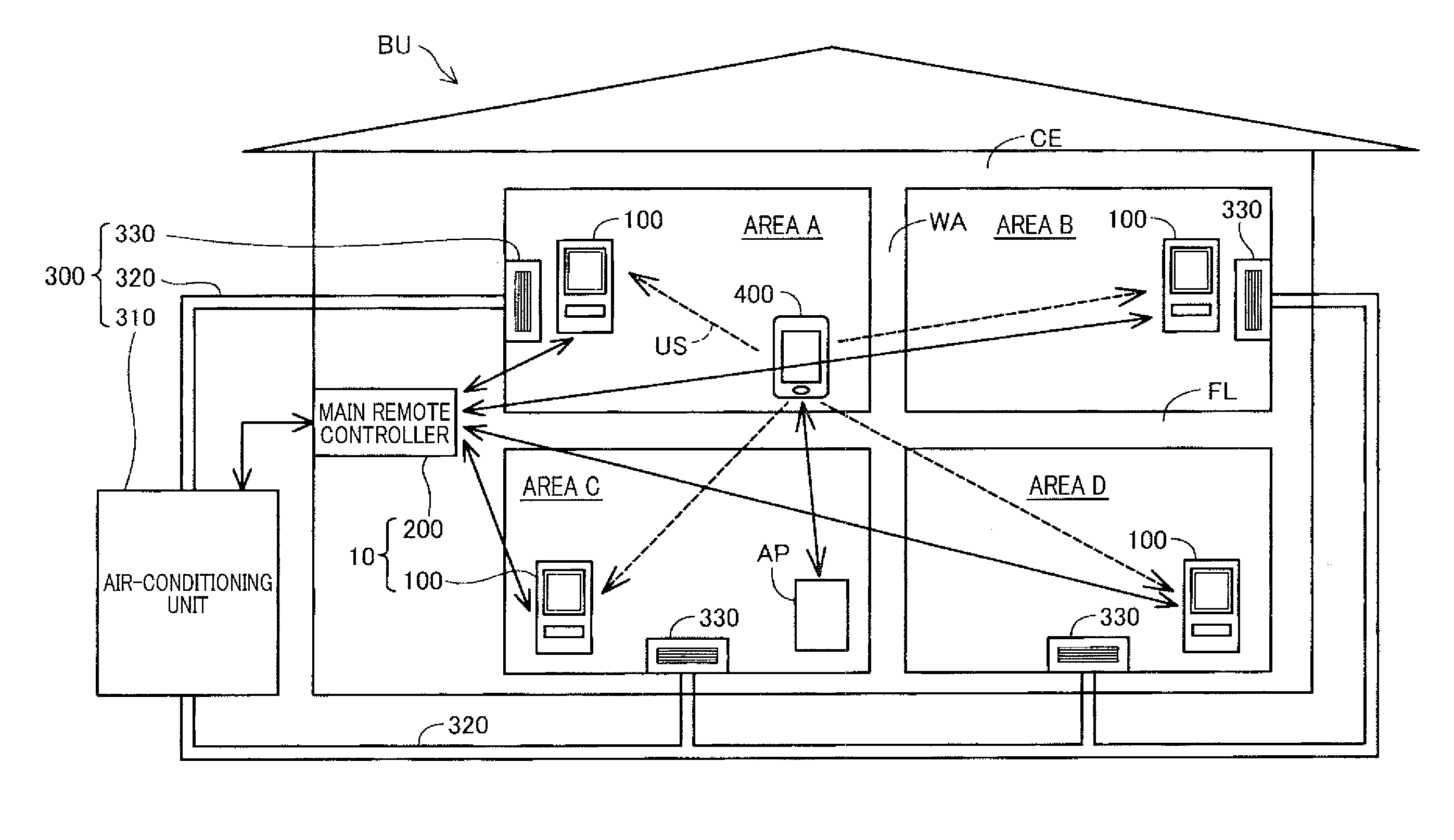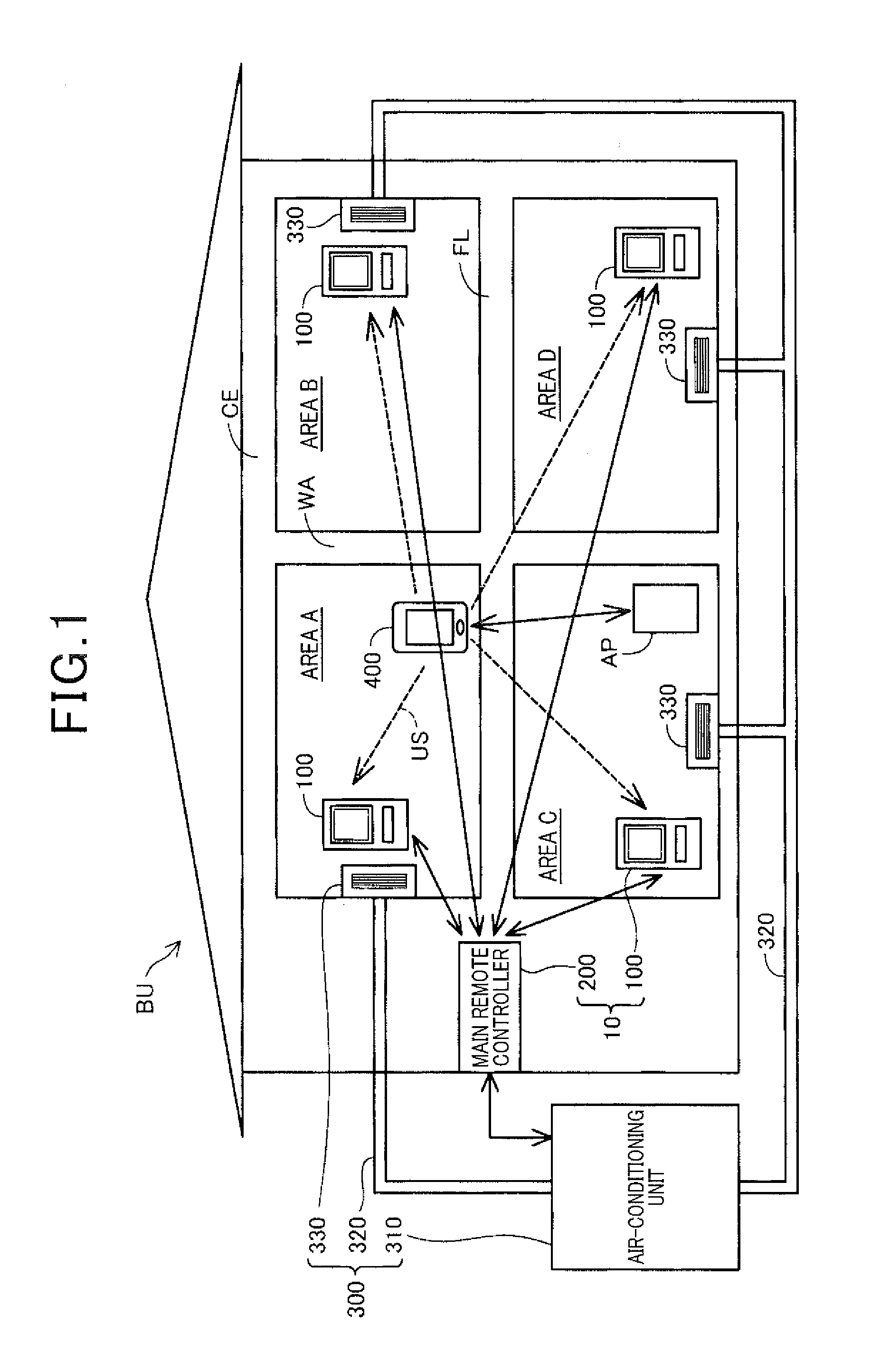Air-conditioning control system
a control system and air-conditioning technology, applied in the field of air-conditioning control systems, can solve the problems of complex system configuration, ineffective reduction of energy consumption, and erroneous determination of the presence of a person by a human detecting sensor, so as to prevent complexity in system configuration, reduce energy consumption, and improve comfort. the effect of air-conditioning
- Summary
- Abstract
- Description
- Claims
- Application Information
AI Technical Summary
Benefits of technology
Problems solved by technology
Method used
Image
Examples
first embodiment
A. First Embodiment
A-1. System Configuration
[0050]FIG. 1 is an explanatory diagram of a configuration of an air-conditioning control system 10 according to a first embodiment of the present disclosure. The air-conditioning control system 10 controls an air-conditioning system 300 that performs air-conditioning (also referred to, hereinafter, as simply “conditioning”) of a plurality of areas inside a building BU. FIG. 1 shows four areas (areas A, B, C, and D) inside the building BU that are subjected to conditioning by the air-conditioning system 300. Each area is a room of which the boundaries are partitioned by walls WA, a floor FL, and a ceiling CE.
[0051]The air-conditioning system 300 is a so-called central-type air-conditioning system. The air-conditioning system 300 has an air-conditioning unit 310, blower units 330, and ducts 320. The air-conditioning unit 310 is set outside of the building BU. The blower units 330 are provided in each area. The ducts 320 connect the air-condi...
second embodiment
B. Second Embodiment
[0114]FIG. 10 shows a sequence chart of the flow of the air-conditioning control process according to a second embodiment. The air-conditioning control process according to the second embodiment differs from that according to the first embodiment shown in FIG. 5 regarding the content of the process for setting the air-conditioning operating mode for each area (step S222 in FIG. 10). The air-conditioning control process according to the second embodiment is similar to that according to the first embodiment in other aspects.
[0115]As shown in FIG. 10, according to the second embodiment, for example, at least a single piece of specific sound wave strength information is present among the pieces of sound wave strength information received from the auxiliary remote controllers 100. The specific sound wave strength information indicates a sound wave strength that is the threshold X or higher. In this case, the operating mode setting unit 211 of the main remote controlle...
PUM
 Login to View More
Login to View More Abstract
Description
Claims
Application Information
 Login to View More
Login to View More - R&D
- Intellectual Property
- Life Sciences
- Materials
- Tech Scout
- Unparalleled Data Quality
- Higher Quality Content
- 60% Fewer Hallucinations
Browse by: Latest US Patents, China's latest patents, Technical Efficacy Thesaurus, Application Domain, Technology Topic, Popular Technical Reports.
© 2025 PatSnap. All rights reserved.Legal|Privacy policy|Modern Slavery Act Transparency Statement|Sitemap|About US| Contact US: help@patsnap.com



